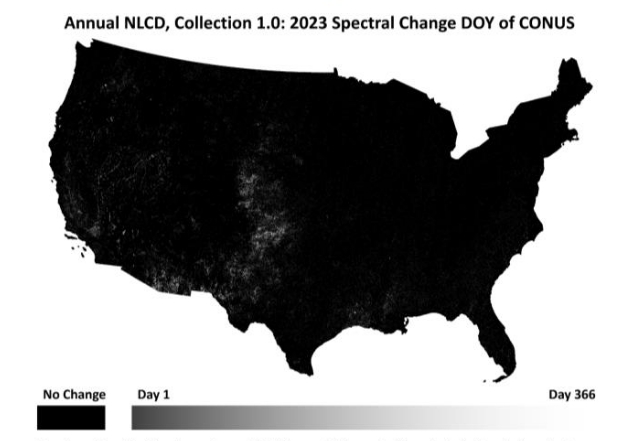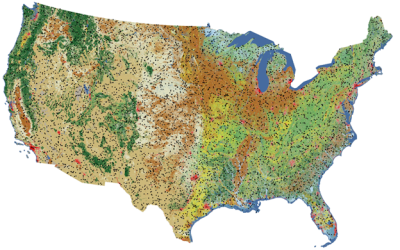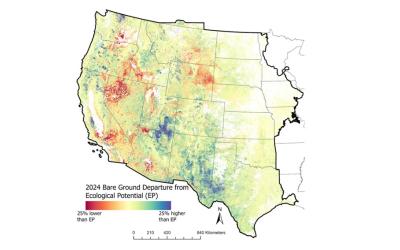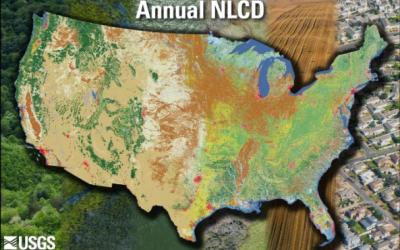The Spectral Change product provides the day-of-year (DOY) on which a significant deviation in surface reflectance was detected within the calendar year of the map product. Spectral changes represent abrupt non-phenological changes in the reflectance of the land surface that may or may not be related to land cover change.

Caption: Depicts the day-of-year (DOY) on which a significant deviation in Landsat surface reflectance was detected within the calendar year.
The surface reflectance that are used to calculate the spectral changes product respond to changes in the physical properties of the land surface, as measured in different wavelengths by one or more Landsat spectral bands. For example, a high intensity wildfire in a forested area produces both a substantial change in surface reflectance and a thematic class change within the NLCD land cover legend. Other changes, such as those produced by drought or precipitation, may produce a significant change in vegetative greenness but still fall within the same land cover class. The value range 1-366 represents the day of year the spectral change occurred, with no change represented by 0.
See the Science Product User Guide for a discussion about the underlying spectral change detection algorithm.
Data Access
Information about data access is available on the USGS Annual NLCD Data Access page.
Documents
Additional information on Annual NLCD and Annual NLCD science products can be found in the Science User Product Guide.
Annual NLCD Citation Information
Annual NLCD has no restrictions on the use of science products. Annual NLCD does ask that if you use the data as part of a publication or presentation that use the following citation below; however, it is not a requirement to use the data.
U.S. Geological Survey (USGS), 2024, Annual NLCD Collection 1 Science Products: U.S. Geological Survey data release, https://doi.org/10.5066/P94UXNTS



